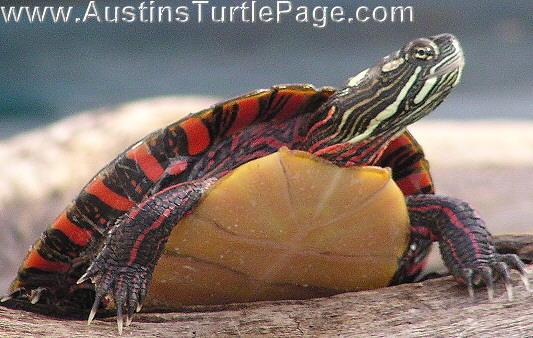WHAT IS BULLYING?
“I have witnessed physical and verbal bullying in the cafeteria, especially when adult presence is low,” says Donna. “This usually happens during breakfast when we have a limited staff on duty. Name calling and pushing and shoving are typical things that we deal with.”Donna West, a food service professional at Brownwood Elementary School in Scottsboro, Alabama, says even the young children in her K-4 school need to be reminded that bullying can hurt.
Understand What Bullying Is
Bullying is systematically and chronically inflicting physical hurt and/or psychological distress on another. Bullying can be physical, verbal or social. Bullying is not just child’s play, but a frightening experience many students face every day. It can be as direct as teasing, hitting, threatening, destruction of property or forcing someone to do something against their will, or as indirect as in rumors, exclusion, or manipulation. Bullying involves a real or perceived power imbalance between the one who bullies and their target.Understand What Bullying Is Not
It is important not to misuse the term bullying for every behavior problem. Identifying what a behavior really is (and labeling the behavior not the student) helps us to select the most appropriate intervention strategies. Can you distinguish bullying from normal conflict? There are three basic ways to know the difference. The student doing the bullying:- Picks on their target day after day (repetition).
- Wins because their target is smaller, younger or less socially able to cope (power imbalance).
- Enjoys seeing their target afraid and upset (intent to harm).
What About Bullying I Can’t See
Today’s students are faced with bullying that the caring adults in their lives can’t always see at school (at least not in the traditional sense).CYBERBULLYING is the term applied to bullying over the Internet, via email, text messaging, and similar technological modes of communication. Cyberbullying includes sending or posting harmful material or engaging in other forms of social aggression. This form of bullying is more intense as it can occur around the clock, and the text or images can be widely disseminated, well beyond the school grounds.
SEXTING is the term combining the words sex and texting. It applies to the act of creating, sending, posting and disseminating sexually suggestive text messages, pictures or videos of oneself or others. Sexting generally is done via cell phones, but teens also use computers, web cams, digital cameras and other electronic devices to get to the Internet.
Bullying and Sexual Harassment
SEXUAL HARASSMENT at school is unwanted and unwelcomed behavior of a sexual nature that interferes with a student’s rights to receive an equal educational opportunity. Bullying and sexual harassment are different, yet linked, behaviors. Bullying in children can develop into sexual harassment in older students. Bullying and sexual harassment share several predictors, such as low empathy and a need for dominance in a relationship.Bullying and Assault
ASSAULT is defined as a violent verbal or physical attack. Assault is a form of extreme bullying that has legal implications. Targets of assault may seek legal action.Where Bullying Behaviors Take Place
Bullying occurs during the school day and after school hours. It happens in the school building, in classrooms, hallways, bathrooms, and in the cafeteria; on the playground or other outdoor common areas on school grounds; and on the bus or at the bus stop. It is important to note that bullying occurs most often in areas where there is little or no adult supervision.Bullying and District and School Policies
A clear definition of bullying is an essential component of bullying policies. You should be able to locate your school and/or district policy on bullying. Assess the policy for inclusion and accuracy of a bullying definition. If your school or district doesn’t have a policy or if the definition is unclear, this is a good place to get started with your prevention program and advocacy efforts.Bullying and State Laws
Almost all states currently have a law addressing bullying in schools. Review the law for inclusion of a bullying definition. Does the law effectively communicate an educator’s legal responsibilities regarding bullying? Does the law require training of all school staff?Commonly Targeted Populations
Usually, the students targeted by hurtful comments or actions are different from their peers in some way. According to the NEA survey, educators reported that bullying based on a student’s weight (23%), gender (20%), perceived sexual orientation (18%), and disability (12%) were of concern in their school. Homophobia plays a large role in the bullying of students who are perceived to be lesbian, gay, bisexual, transgender (LGBT), gender non-conforming, or those questioning their sexual identity. According to a 2011 National School Climate Survey conducted by the Gay, Lesbian and Straight Education Network (GLSEN), 8 out of 10 middle and high school LGBT students experience harassment at school because of their sexual orientation. Students are also commonly targets of bullying based on their religious beliefs. Research has shown a trend in the bullying of Muslim- American students. Recent studies indicate the group most targeted for bullying is special education students. When special education students are targets of bullying, some are likely to then bully fellow special education students.Know The Consequences
Bullying will lead to a number of negative consequences academically and emotionally. In addition to poor attendance and decreased academic performance, bullying causes feelings of helplessness, anger and frustration. The consequences experienced are not limited just to the person who is bullied. Bullying causes mental, physical and emotional damage to all involved, including bystanders.And, research has shown the effects last well into adulthood. When you think of these consequences remember this one fact: Bullying is preventable and, thereby, the consequences are too.
Please share this with everyone you can, we can stop this before it starts, kids are dieing from this, ENDING thee lives, why are we not stoping this!!
https://www.youtube.com/watch?feature=player_embedded&v=bJV17zIvHPM





